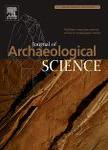版权所有:内蒙古大学图书馆 技术提供:维普资讯• 智图
内蒙古自治区呼和浩特市赛罕区大学西街235号 邮编: 010021

作者机构:Indian Inst Technol Gandhinagar India
出 版 物:《JOURNAL OF ARCHAEOLOGICAL SCIENCE》 (考古学杂志)
年 卷 期:2024年第170卷
核心收录:
学科分类:0303[法学-社会学] 0601[历史学-考古学] 06[历史学] 07[理学] 0708[理学-地球物理学] 0712[理学-科学技术史(分学科,可授理学、工学、农学、医学学位)]
基 金:IIT Gandhinagar [MIS/IITGN/R & D/VP/202122/039] ASI Archaeology Chair [MIS/IITGN/ASI/HSS/VNP/202223/080]
主 题:Lothal Harappa Remote sensing Cloud-computing Palaeochannels
摘 要:Lothal is situated approximately 30 km inland from the Gulf of Khambhat on the western coast of India in Gujarat. It served as a bustling port during the Bronze Age Harappan period (2600 BCE to 1900 BCE) and was connected to a series of Harappan production and distribution centres dotted along the Gulf of Kachchh and the Rann of Kachchh. Artefacts of foreign nature found in Lothal attest to its intercultural trade relation. Further, Lothal is renowned for its well-preserved brick-walled dockyard and warehouse. However, different views for and against the dockyard are available in archaeological literature. This study revisits the dockyard theory from the landscape perspective and integrates information extracted from early maps, multi-spectral and multitemporal satellite data of different spatial resolutions, and Digital Elevation Models to understand the larger context of the palaeolandscape around Lothal, including both fluvial and coastal areas. The findings offer fresh perspectives on the hydrographic dynamics of the region, highlighting an evident direct connection between Lothal and the former course of River Sabarmati, one of the major rivers in Gujarat that currently flows 20 km east of Lothal. The reconstruction of the palaeolandscape, both fluvial and coastal, complements and verifies certain interpretations related to the dockyard theory, partially bridging the credibility gap in the broader discussion and strengthening the arguments in favour of the dockyard theory. Additionally, the study underscores the significance of integrating various types of geospatial data to understand past landscapes. Further investigation of the reconstructed palaeolandscape, particularly the complex hydrographic network including rivers and creeks, of this historically important region has the potential to contribute to new insights into existing archaeological and geomorphological interpretations and may guide us about the past human adaptation to the natural dynamics.